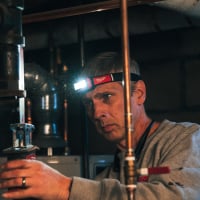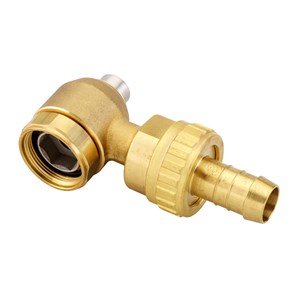Welcome! Here are the website rules, as well as some tips for using this forum.
Need to contact us? Visit https://heatinghelp.com/contact-us/.
Click here to Find a Contractor in your area.
If our community has helped you, please consider making a contribution to support this website. Thanks!
Can I get an review of my install pls
Options
Comments
-
GW
The parts u pictured were the ones that I was going to use. I do like the idea of a bit of extra control with the supply side valve though.0 -
-
Alan, just curious, what is the practical reason for two valves? You would still need to drain the rad the old fashioned way of there was a service incident. At that point it takes 3 minutes to screw on a cap (on the return side) if you needed to refill the system to heat the rest of the home.
I’m all good for service valves, I spend dough at the boiler area for sure0 -
> @kensheets2 said:
> GW
> The parts u pictured were the ones that I was going to use. I do like the idea of a bit of extra control with the supply side valve though.
Yes isn’t that what my pic shows? Maybe I didn’t pay attention to the arrows 😀0 -
There are too many advantages to valve both sides. The main one being that you won't need to go into the mechanical room at all to service a radiator to drop the pressure or to refill.GW said:Alan, just curious, what is the practical reason for two valves? You would still need to drain the rad the old fashioned way of there was a service incident. At that point it takes 3 minutes to screw on a cap (on the return side) if you needed to refill the system to heat the rest of the home.
Also, if all you have is a union connection, you'll need more than a cap, no?
8.33 lbs./gal. x 60 min./hr. x 20°ΔT = 10,000 BTU's/hour
Two btu per sq ft for degree difference for a slab0 -
You’re right- I just have never said to myself gee wiz I shoulda installed a valve on each side. Maybe that day will come
Spin on a cap: well 30 seconds to spin off the female fitting body and another two minutes to tape up and spin on a cap- but I must have good luck I guess- never have done that either.
Ancient hot water systems, no valves (or, I’m certainly not going to actually shut off an ancient valve)
Most of our modern installs are home run so it’s easy to deal with
My service guy has has to change a panel rad valve a few times- maybe he would say differently0 -
@Alan (California Radiant) Forbes , isn't there a fitting that screws on where that cap is that lets you attach a hose and drain the radiator through the valve?0
-
EBEBRATT-Ed, mentioned reducing to 1/2" off of the main 3/4" supply and return to each of the radiators, is there any downfall to that versus staying with 3/4" to the radiator valving. That would make life so much more bearable.0
-
Maybe, but how would you open the valve once the hose is screwed on. The valve is under the cap.mattmia2 said:@Alan (California Radiant) Forbes , isn't there a fitting that screws on where that cap is that lets you attach a hose and drain the radiator through the valve?
I believe they are Oventrop or Danfoss lockshield valves.8.33 lbs./gal. x 60 min./hr. x 20°ΔT = 10,000 BTU's/hour
Two btu per sq ft for degree difference for a slab0 -
No, the flow through a rad is somewhat small, you can do 3/4 if you really want but it's more normal to do 1/2.kensheets2 said:EBEBRATT-Ed, mentioned reducing to 1/2" off of the main 3/4" supply and return to each of the radiators, is there any downfall to that versus staying with 3/4" to the radiator valving. That would make life so much more bearable.
0 -
1/2" should be able to move 15,000 BTU/hr, no harm in going to 3/4, valves are probably the same cost.
I too would transition to copper under the floor, I don't like to see exposed pex at radiators, like Alan showed.Bob "hot rod" Rohr
trainer for Caleffi NA
Living the hydronic dream0 -
@Alan (California Radiant) Forbes this is what i was thinking of:
https://assets.danfoss.com/documents/DOC000086405098/DOC000086405098.pdf0 -
Looks cool and yes, it would serve a purpose if for whatever reason you felt as though you needed to drain your radiator on a regular basis. But it's few and far between the number of times I've had to drain a radiator to service it; mostly to replace the manual air vent and I sometimes do that on the fly if there aren't any isolation valves.
8.33 lbs./gal. x 60 min./hr. x 20°ΔT = 10,000 BTU's/hour
Two btu per sq ft for degree difference for a slab0 -
I think that fitting screws on to the valves you are using (or something very similar) to allow you to drain the radiator in a controlled manner if you need to remove it. Not quire clear to me how it allows you to turn the valve off without water pouring out but also allows it to drain in to that fitting but I know I saw a description of the system somewhere.0
-
It’s all very nice but what is one to do, run a hose through the house?
We just kill the two valves at the manifold, take the pressure off (or skip that part of it a smaller rad or we are in a flaming hurry), gently snip the Pex and let the pressure bleed into a bucket (bucket up at the ceiling), snip it, then snip the other like a foot or whatever away as to not cross the likes when we re couple the lines.0 -
Or a shallow bucket...0
-
Try it and let me know how it works 😀0
Categories
- All Categories
- 87.3K THE MAIN WALL
- 3.2K A-C, Heat Pumps & Refrigeration
- 61 Biomass
- 429 Carbon Monoxide Awareness
- 120 Chimneys & Flues
- 2.1K Domestic Hot Water
- 5.8K Gas Heating
- 115 Geothermal
- 166 Indoor-Air Quality
- 3.7K Oil Heating
- 77 Pipe Deterioration
- 1K Plumbing
- 6.5K Radiant Heating
- 395 Solar
- 15.7K Strictly Steam
- 3.4K Thermostats and Controls
- 56 Water Quality
- 51 Industry Classes
- 50 Job Opportunities
- 18 Recall Announcements




